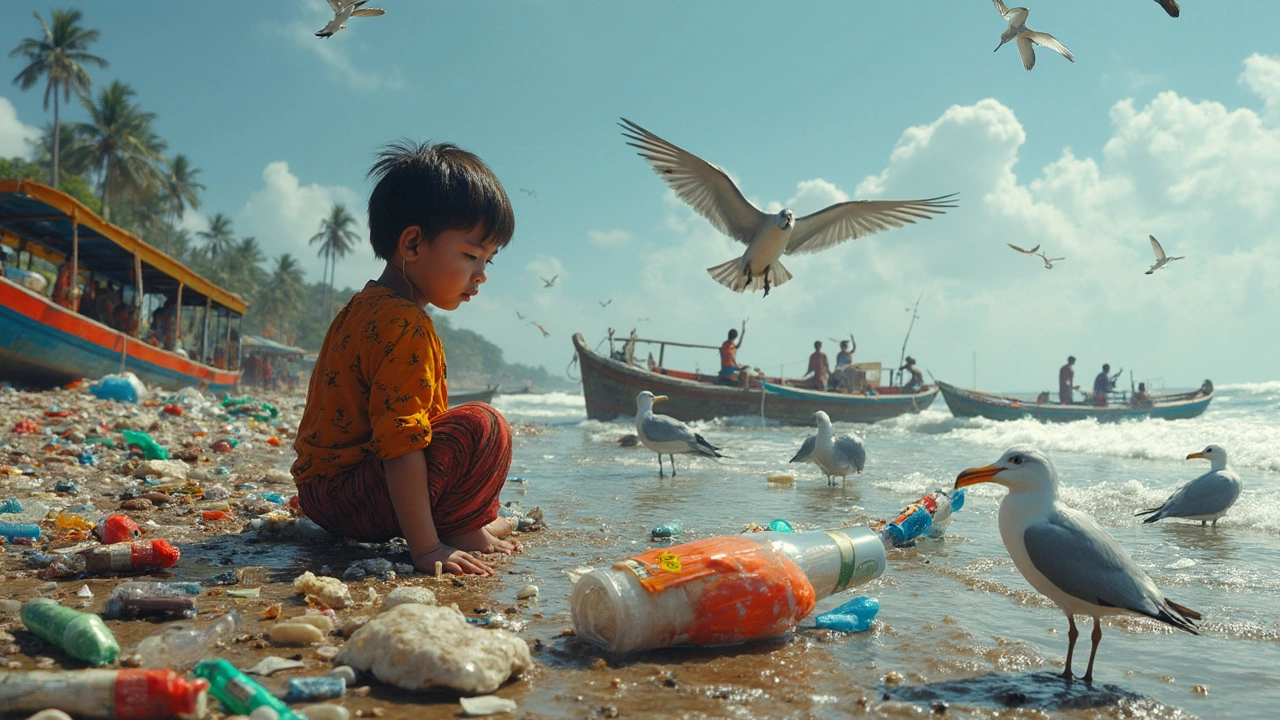Ocean Plastic: What It Means for Indian Manufacturing
You've probably seen pictures of floating bags and bottle fragments littering our beaches. That same plastic ends up in the supply chain, driving up raw‑material costs and hurting the planet. For factories in India, dealing with ocean plastic isn’t just an environmental issue – it’s a business challenge. Below we break down why it matters and what you can do right now to turn the problem into an opportunity.
Why Ocean Plastic Matters for Your Factory
First, plastic that drifts into the sea often returns as tiny micro‑particles that contaminate water sources used by many production plants. When these particles settle in river water, they can clog filters, reduce product quality, and increase maintenance expenses. Second, the global push for greener branding means customers are scrutinizing where your raw materials come from. If you rely on virgin plastic, you risk losing contracts to competitors who already use recycled feedstock.
Third, government initiatives like the Plastic Waste Management Rules are tightening. Non‑compliance can mean fines, stoppage orders, or loss of export privileges. In short, ignoring ocean plastic can bite you in cost, reputation, and legality.
Practical Steps for Makers
Start by auditing your plastic inputs. Identify which grades are sourced locally versus overseas and check if recycled versions meet your specs. Many Indian recyclers now offer high‑quality PET and HDPE that perform just as well in packaging, automotive parts, and consumer goods.
Next, redesign products to use less plastic. Simple changes – thinner walls, snap‑fit closures, or modular components – can cut material use by 15‑30 %. Pair this with a take‑back program where customers return used items for recycling. That not only shrinks waste but also creates a steady stream of reclaimed plastic for your next batch.
Finally, invest in on‑site shredding or partner with a local recycling hub. Turning post‑consumer waste into raw material reduces transport emissions and gives you a clear story to tell buyers: "We turn ocean‑bound plastic into new products." This narrative resonates strongly with brands looking to boost their ESG scores.
Implementing these steps doesn’t require a massive overhaul. Start small – swap one high‑volume resin for its recycled counterpart, track cost savings, and expand from there. Over time, you’ll see lower raw‑material bills, fewer regulatory headaches, and a stronger market position.
Ocean plastic is a real headache, but it also holds a hidden advantage for factories that act fast. By cleaning up the supply chain, you protect the environment, satisfy buyers, and keep your bottom line healthy. Ready to make the switch? The first move is simply asking your supplier for recycled content options today.
Who’s Really Dumping Plastic in the Ocean? Shocking Facts and How It Happens
Ever wondered who’s actually behind all that plastic in the ocean? This deep dive uncovers which countries, industries, and everyday habits are dumping plastics, how it all adds up, and what you can do to stop it. Shocking facts, real examples, and smart tips you can use right away. Perfect for readers who want the truth about ocean plastic and actionable advice. Find out why your soda bottle might end up in the Pacific, even if you live nowhere near the sea.
Read More




